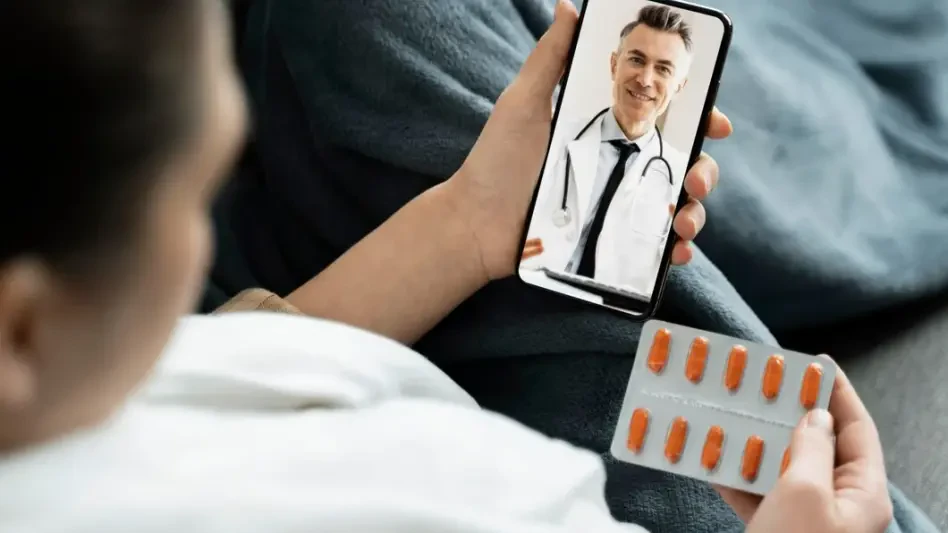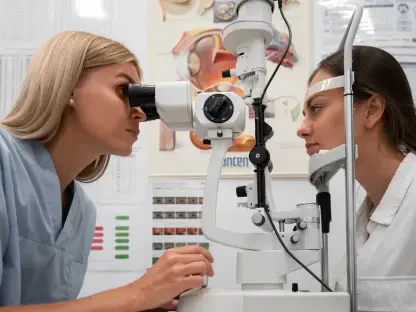In an era where technology seamlessly intertwines with daily life, consider a scenario where a sudden health concern arises late at night, and instead of rushing to an emergency room, a quick tap on a mobile app connects you directly to a doctor. This is no longer a distant vision but a growing reality through telehealth innovations embedded in everyday devices. Virtual doctor visits via mobile apps are reshaping how healthcare is accessed, offering unprecedented convenience in a digitally-driven world. The surge in demand for such services, particularly since the global health crisis, underscores their importance. This analysis delves into the trend through the lens of a major player’s latest feature, broader industry shifts, expert perspectives, and the potential future of mobile-based healthcare.
The Rise of Telehealth in Mobile Ecosystems
Surge in Virtual Care Adoption
The adoption of telehealth has skyrocketed in recent years, driven by necessity and technological advancements. According to reports from the American Medical Association, telehealth usage in the USA has grown exponentially, with over 30% of patient visits conducted virtually by the start of this decade. This shift reflects a profound change in consumer behavior, as individuals increasingly seek immediate medical advice without the barriers of travel or long wait times.
Mobile apps have become pivotal in this transformation, acting as gateways to healthcare services. Industry data suggests that nearly 60% of Americans have used a health-related app for consultations or monitoring, a trend fueled by the demand for on-the-go solutions. These platforms are no longer just tools for fitness tracking but are evolving into comprehensive hubs for medical care, catering to a society that values speed and accessibility.
The implications of this growth are significant, as mobile telehealth bridges gaps in healthcare access, especially for those in rural or underserved areas. With smartphones becoming ubiquitous, the ability to consult a doctor through an app is democratizing medical services, making them available to a broader demographic than ever before.
Samsung Health’s Innovative Telehealth Feature
A prime example of this trend is the integration of virtual doctor visits into Samsung Health, a widely used app on Galaxy devices. Through a strategic partnership with HealthTap, a leading US-based virtual healthcare provider, Samsung has introduced a feature that allows users to book and conduct consultations directly within the app. This marks a notable milestone, as it embeds professional medical services into a platform originally focused on fitness.
This feature offers practical benefits, enabling users to connect with doctors for primary and urgent care needs without downloading separate applications. Additionally, the app facilitates reviewing doctors’ notes and follow-up instructions, ensuring continuity of care. If in-person visits are required, the system supports a smooth transition, blending virtual and traditional healthcare seamlessly.
Samsung’s move builds on earlier efforts to integrate telehealth into other devices like TVs, but extending it to mobile platforms significantly broadens its reach. As this functionality rolls out to millions of users in the USA, it exemplifies how tech giants are responding to consumer needs by embedding healthcare solutions into everyday technology, setting a precedent for others in the industry.
Industry Perspectives on Mobile Telehealth
The integration of telehealth into mobile ecosystems is viewed as a game-changer by many industry leaders. Experts argue that mobile apps are uniquely positioned to enhance healthcare delivery due to their widespread use and personal nature. A thought leader in digital health recently noted that such platforms can reduce barriers to care, particularly for younger generations who are accustomed to managing life through their smartphones.
Partnerships like the one between Samsung and HealthTap are seen as critical to scaling virtual care. These collaborations combine technological expertise with medical credibility, potentially improving access for millions. However, challenges remain, including ensuring the quality of care matches in-person standards and addressing disparities in technology access among different populations.
Concerns also arise around data security and the risk of misdiagnosis in virtual settings. Industry analysts emphasize the need for robust safeguards and clear guidelines to maintain trust in these systems. Despite these hurdles, the consensus is that mobile telehealth is a vital step toward modernizing healthcare, with partnerships paving the way for innovative, user-centric solutions.
Future Prospects of Virtual Doctor Visits
Looking ahead, the potential for virtual doctor visits in mobile apps appears boundless, with platforms like Samsung Health likely to expand into more specialized medical fields. Leveraging vast amounts of user health data, these apps could offer personalized care plans, tailoring advice and treatments to individual needs. Such advancements might transform smartphones into central tools for ongoing health management.
Beyond specific apps, the broader tech and healthcare industries stand to be reshaped by this trend. Benefits like reduced healthcare costs and improved patient outcomes are balanced against challenges such as privacy risks and the limitations of diagnosing complex conditions virtually. Striking this balance will be crucial as telehealth becomes more integrated into daily life.
The evolution of this trend could also see mobile devices becoming indispensable in preventive care, with real-time monitoring and AI-driven insights guiding users toward healthier lifestyles. As companies invest in these technologies over the coming years, from now through 2027, the line between technology and healthcare may blur further, creating a future where medical access is as simple as unlocking a phone.
Key Insights and Moving Forward
Reflecting on this transformative period, the integration of virtual doctor visits into mobile apps like Samsung Health marked a significant response to consumer demand for accessible healthcare. The broader shift toward mobile-based medical services gained momentum, highlighting a pivotal change in how individuals engaged with health systems. The balance between virtual consultations and the need for in-person care emerged as a critical consideration during this evolution.
As this trend unfolded, actionable steps for stakeholders became clear, including the need to prioritize data security and invest in user education to maximize the benefits of telehealth. Healthcare providers and tech companies alike were encouraged to collaborate on solutions that address disparities in access, ensuring that innovations reached diverse populations. These efforts promised to shape a future where digital health tools were not just conveniences but essential components of comprehensive care.









